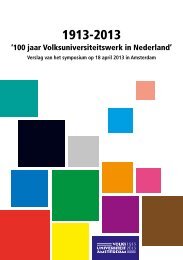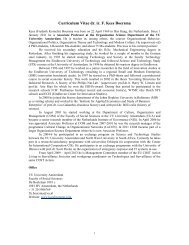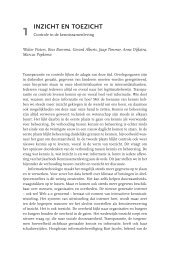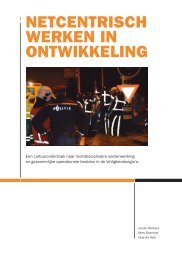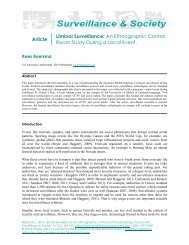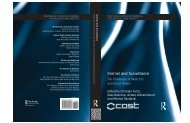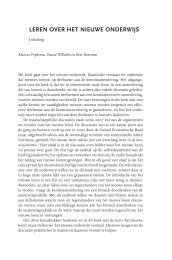Access article in PDF - Project MUSE - Johns Hopkins University
Access article in PDF - Project MUSE - Johns Hopkins University
Access article in PDF - Project MUSE - Johns Hopkins University
Create successful ePaper yourself
Turn your PDF publications into a flip-book with our unique Google optimized e-Paper software.
88 BOERSMA<br />
searchers <strong>in</strong> the Physics Laboratory to access the universities as a<br />
source of knowledge. Moreover, Philips successfully <strong>in</strong>fluenced the<br />
curriculum of its future employees. The urgent need to comb<strong>in</strong>e<br />
physics tra<strong>in</strong><strong>in</strong>g with practical skills provided the occasion for Philips<br />
to <strong>in</strong>sist on the creation of a new Applied Physics curriculum at<br />
the Delft <strong>University</strong> of Technology <strong>in</strong> 1930. 74 The course proved its<br />
value to Philips, which hired n<strong>in</strong>eteen of the seventy-n<strong>in</strong>e physics<br />
eng<strong>in</strong>eers whom Delft graduated before the Second World War.<br />
Holst expected scientific specialists like Bouwers to understand<br />
certa<strong>in</strong> features of modern technology and to f<strong>in</strong>d solutions to scientific<br />
problems. Holst’s organization, with its close relations to the<br />
Dutch universities, provided Philips with a source of up-to-date<br />
knowledge <strong>in</strong> X-ray and other complex technologies. On the other<br />
hand, Holst did not allow <strong>in</strong>dividual Physics Laboratory researchers<br />
complete freedom of choice <strong>in</strong> research topics. The company’s leaders<br />
reached a consensus on the direction of new <strong>in</strong>vention. Holst<br />
ma<strong>in</strong>ta<strong>in</strong>ed that it was not the researchers’ but rather the company’s<br />
task to identify promis<strong>in</strong>g new technologies.<br />
Internal Struggles and Bus<strong>in</strong>ess Losses<br />
Bouwers clearly struggled with Holst about research policy, and he<br />
was one of the few who succeeded <strong>in</strong> break<strong>in</strong>g free from Holst’s organizational<br />
structure and creat<strong>in</strong>g for himself a high degree of autonomy<br />
with<strong>in</strong> a department that had grown rapidly over the years.<br />
Termed the “grand seigneur” by one of his staff members, Bouwers<br />
managed, through his creativity and his obst<strong>in</strong>acy, to leave his mark<br />
on the X-ray department. 75 Bouwers’s <strong>in</strong>dividuality is illustrated <strong>in</strong><br />
a comment by a researcher at the X-ray laboratory that “he was the<br />
only person at the laboratory who had a secretary”: “Holst did not<br />
require one. He had two girls ...totake care of all the adm<strong>in</strong>istration<br />
for him but he really did not like hav<strong>in</strong>g secretaries. Van der<br />
Pol [another Physics Laboratory group leader] didn’t have a secretary<br />
74. For Philips’s role <strong>in</strong> the history of Applied Physics at the Delft <strong>University</strong><br />
of Technology see also Adolph F. Kamp, ed., De Technnische Hogeschool te Delft,<br />
1905–1955 (‘s-Gravenhage, 1955), 281–83; R. Kronig, “De opleid<strong>in</strong>g <strong>in</strong> de technische<br />
natuurkunde <strong>in</strong> Nederland,” Nederlands Tijdschrift voor Natuurkunde 37,<br />
nr. 7 (1971): 186–88; Peter Aarts, Wim Dries, and Fons Spier<strong>in</strong>gs, “Apparatenbouwers<br />
of wetenschappers: De eerste natuurkundige <strong>in</strong>genieurs,” Intermediair<br />
17, nr. 36 (1981): 55–63.<br />
75. PCA 181.2 A to Z, <strong>in</strong>terview with H. C. Burgers, 20 April 1973.



